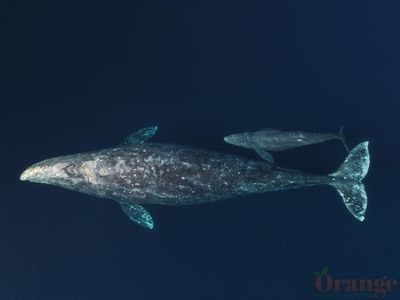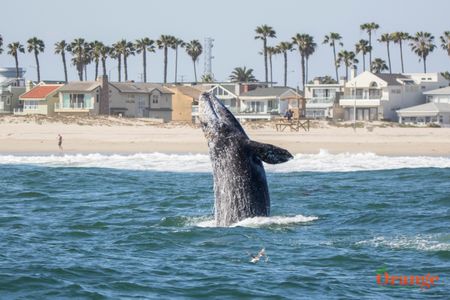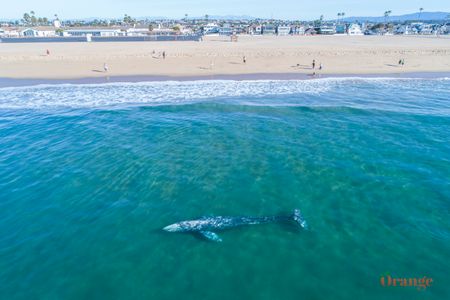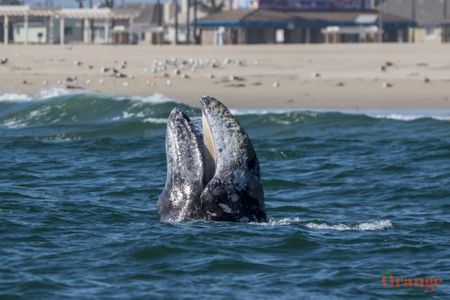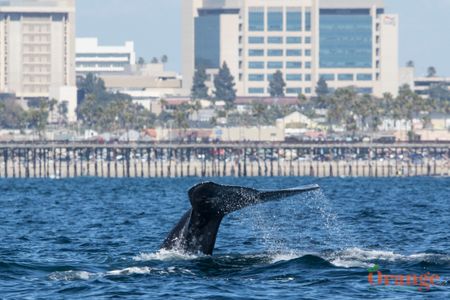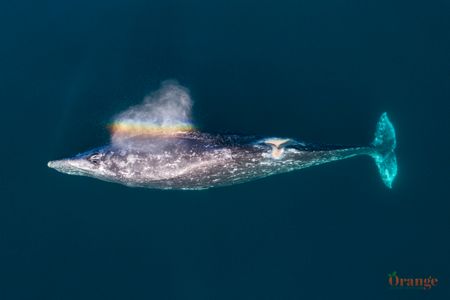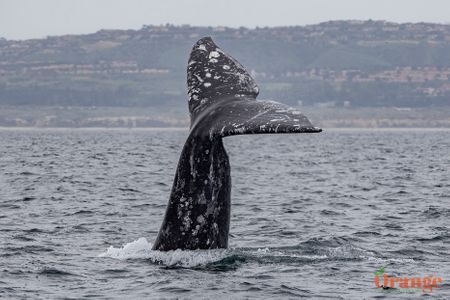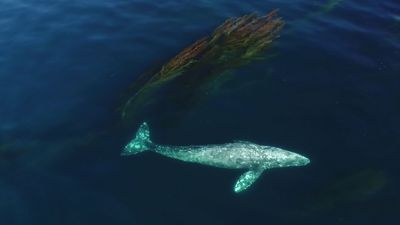Gray Whale
Known for having one of the longest migrations of any mammal, gray whales travel 12,000 miles round-trip annually from their feeding grounds in the Bering and Chukchi Sea near Russia and Alaska down to their birthing/mating/summer lagoons in Baja California. Their migration route takes them right along Orange County's coastline around December through May with the cow/calf pairs being the last to head North in April and May. During this time, they typically hug the coastline and are seen from many Orange County Beaches. It is thought they travel so close to shore for guidance and also to keep the babies safer on their first journey, once they get farther up along the California coastline like Monterey Bay and even Point Dume, they will face threats from orcas who prey on the calves. These whales primary food source of amphipods lies in the sediment in the colder waters, they feed on them by turning on their side and scooping up the sediment and filtering it through their baleen leaving the food in their mouth, they are thought to primarily use their right side facing down and because of that are known to lose vision on their right side as they get older. Gray whales are known to lose about 1/3 of their body weight each migration because they do not feed on their entire journey, because of this, the females only give birth every 2 years as they need a year to recover after nursing their calf. Calves are born weighing 2,000 lbs. and grow quickly from their mothers mile which is high in fat, they will only stay with their mother for about 1 year before they separate . during their life span which is thought to be around 60 years, they will swim the equivalent of traveling to the moon and back.
